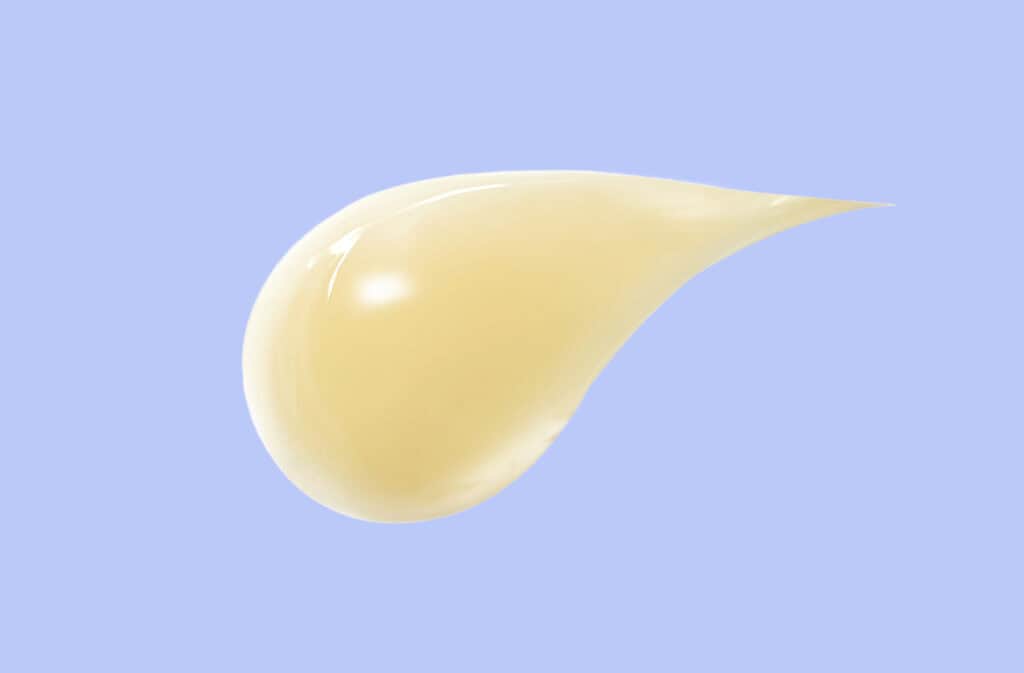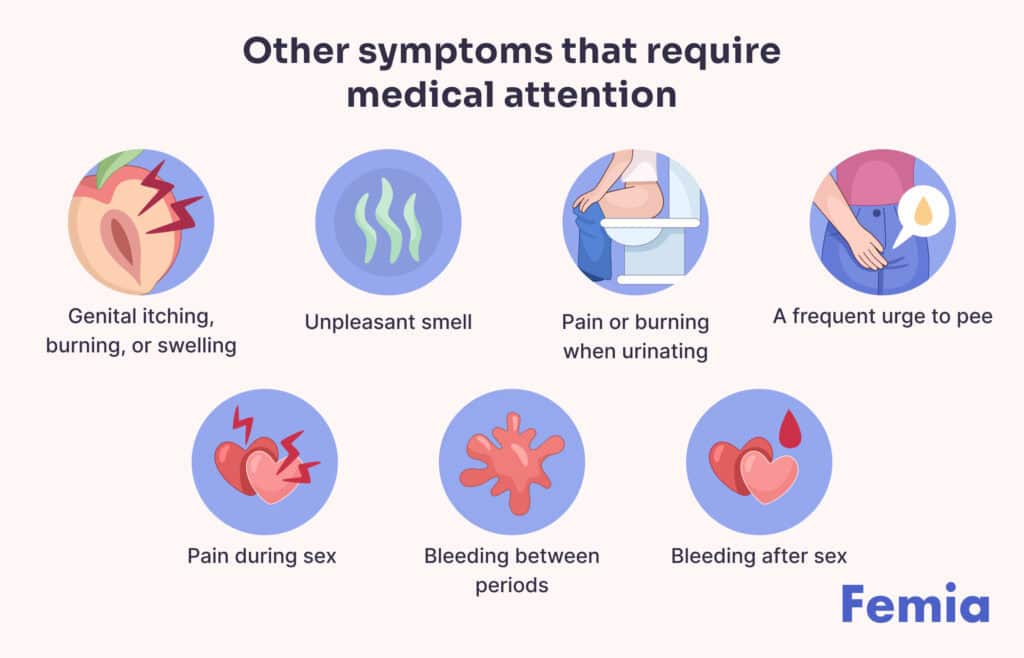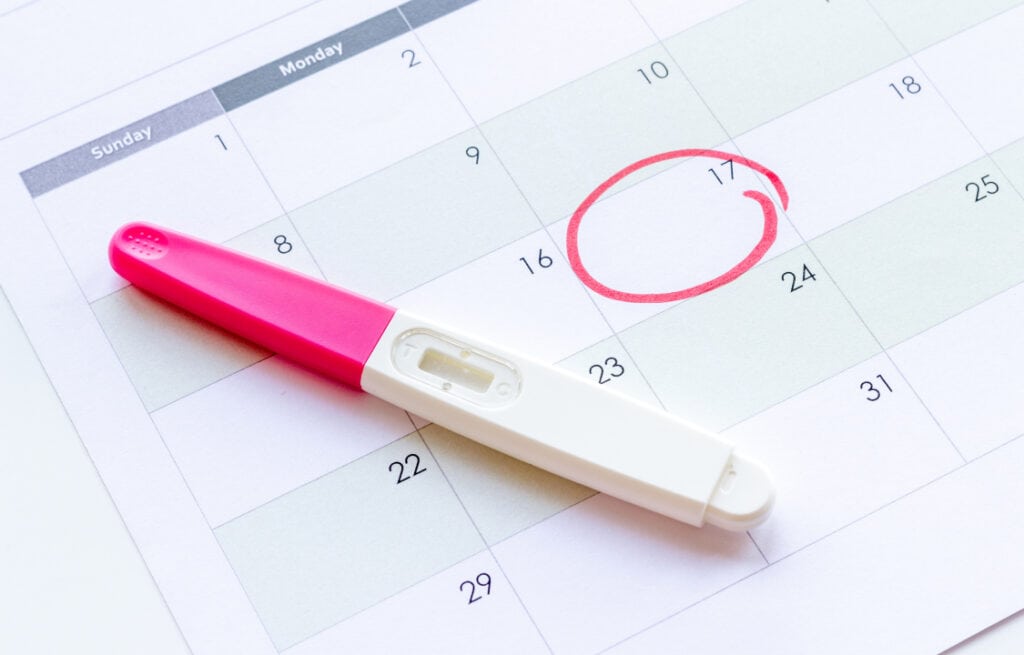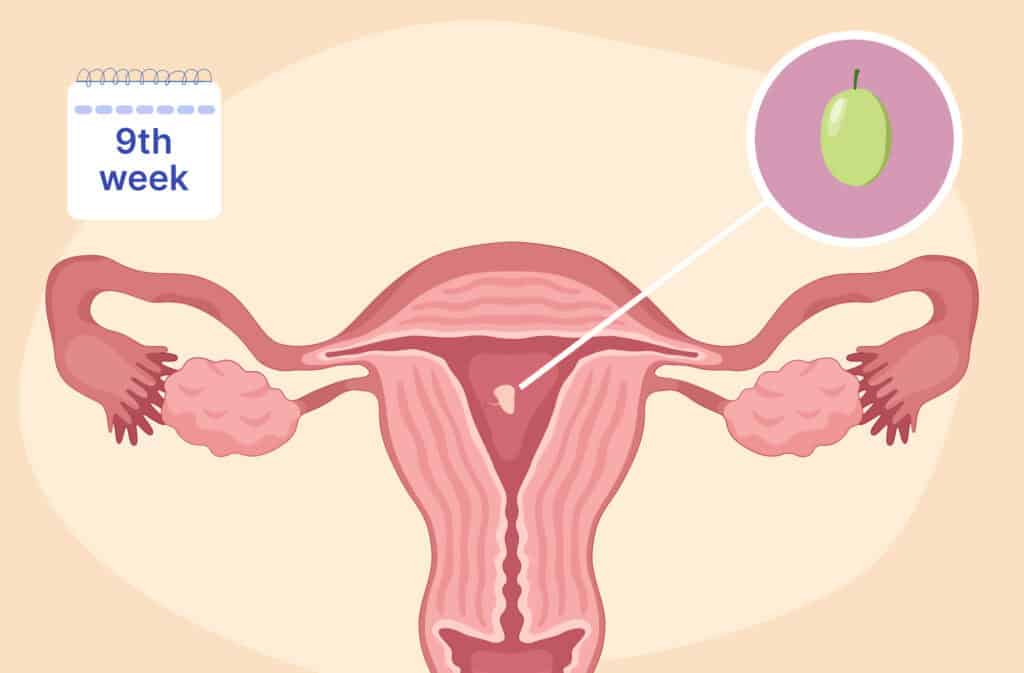Femia > Health Library > Your cycle > Health > Yellow discharge: Causes, meanings, and when to see a doctor
Yellow discharge: Causes, meanings, and when to see a doctor

- Updated Feb 25, 2025
- Published
CRAFTED BY HUMAN
Crafted by human At Femia, we provide accurate and up-to-date information at every stage of your journey, from trying to conceive, pregnancy and postnatal support. All content is created by a real person based on in-depth research and own professional experience. Femia ensures that you will receive expert advice, strict accuracy and a personalized approach from our authors/medical experts. Learn more about our editorial policy.
FACT CHECKED
Fact checked At Femia Health, we maintain the highest standards of editorial excellence in delivering content focused on helping you conceive, guiding you through pregnancy, and supporting you postpartum. Explore our content review principles to learn how we ensure the accuracy and quality of our health and lifestyle tips for every stage of your journey.
Yellow discharge is generally nothing to worry about; it’s usually caused by hormonal changes or small amounts of menstrual blood mixing with your cervical fluid. It can, however, be a sign of infection if accompanied by other symptoms, such as burning, discomfort, or a foul odor.
Your vaginal discharge varies throughout the month in response to your changing hormones during your menstrual cycle. Vaginal discharge is usually milky white or clear, though light yellow discharge may be caused by changing hormone levels during the month. Yellow discharge may result from small amounts of menstrual blood mixing with the cervical mucus inside your body.
If your vaginal discharge is yellow, green, or gray, it might be time to book an appointment with your OBGYN. This is especially true if the yellow vaginal discharge is accompanied by an unpleasant smell, irritation, pain, burning when you pee, pain during sex, or bleeding between periods.

What is vaginal discharge?
Vaginal discharge (leukorrhea) contains vaginal fluid and cells. Vaginal fluid helps to keep the vagina healthy and also plays a part in your reproductive cycle. If you are tracking your cervical mucus, you’ll know it changes depending on where you are in your menstrual cycle.
Changing hormone levels throughout your cycle impact your cervical fluid. You probably won’t notice any cervical mucus during your menstrual phase, though it is there during your period. Cervical mucus is thick, white, and dry before ovulation. This type of cervical mucus keeps sperm from getting through the cervix. In the days preceding ovulation, your mucus will appear creamy.
During your ovulation phase, your cervical mucus will become wet and slippery. Taking on an egg white-like consistency, this mucus makes it easier for sperm to swim through to enter the uterus. After ovulation has occurred, you may notice a reduction in vaginal discharge.
Why is my discharge yellow?
If you’ve noticed a yellow smear on the toilet paper after wiping, you’re likely wondering ‘why do I have yellow discharge?’ Discharge can be many different colors, though it is usually white or clear. White discharge may appear yellow after exposure to the air for a while. You may sometimes notice yellow- or pink-tinged discharge when your cervical fluid is mixed with a small amount of menstrual blood. Menstrual blood is a common cause of yellow discharge, meaning it’s totally normal and nothing to worry about.
What does yellow discharge mean?
Yellow-tinged discharge can be related to changing estrogen levels during your cycle. Yellow discharge by itself is not generally something to worry about. However, when accompanied by other symptoms, it could be a sign of an underlying reproductive health condition. Here are some symptoms to look out for:
- Green, yellow, or gray discharge
- A foul smell
- Painful urination
- Pain during sex
- Swelling, pain, and irritation of the vulva or vagina
- Bleeding after sex
- Bleeding between periods
If you think you may have an infection, contact your OBGYN right away to discuss treatment options. Your OBGYN will want to run a few simple tests to determine the cause of the symptoms.
Yellow discharge before and after period
Some women notice yellow-tinged discharge around the time of their period. This is simply a small amount of blood mixing with your cervical fluid, giving it a yellow hue. It’s nothing to worry about and will usually clear up after a couple of days. Some yellow discharge after your period is a natural form of vaginal cleansing, with your vagina shedding old cells and menstrual blood.
👉Find out more: Bruised cervix symptoms: Causes, signs, and when to seek help
Yellow discharge as a sign of infection
Yellow discharge can indicate infection, especially when accompanied by other symptoms. The following conditions can cause yellow vaginal discharge:
Yeast infection
Thrush is a common yeast infection that can cause a thick yellow-whitish cottage cheese-like discharge. Other symptoms include itching, irritation, swelling, redness, and pain during sex. You can use over-the-counter antifungal medication to treat this condition. If recurrent yeast infections are a problem, you might benefit from the candida cleanse diet.
Bacterial vaginosis
An overgrowth of bacteria causes bacterial vaginosis (BV). Many sufferers complain of an unpleasant fishy odor and a thin, watery gray-white discharge. However, the bacterial vaginosis can also cause yellow discharge.
Sexually Transmitted Infections (STIs)
- Trichomoniasis. Trichomoniasis (trich) is an often asymptomatic STI, meaning many people aren’t aware they have the condition. When symptoms do appear, however, they include a white, yellow, or green foul-smelling discharge with a frothy consistency, itching or burning, pain during sex, and a frequent urge to pee.
According to a 2018 study published in the Journal of Family Medicine and Primary Care, 8 in 10 women who tested positive for trich complained of discharge. Your doctor can prescribe antibiotics to fight this infection.
- Chlamydia and gonorrhea. Both these STIs are associated with a yellow, white, or gray discharge with an unpleasant smell, a burning sensation when peeing, pain during sex, bleeding after sex, and bleeding between periods. However, both infections can also be asymptomatic, which is why it’s important to have regular sexual health checks. According to a 2020 study published in Epidemiology and Infection, discharge was a presenting symptom in only one in 10 women who tested positive for gonorrhea.
Pelvic inflammatory disease (PID)
PID is a known complication of untreated STIs such as chlamydia and gonorrhea. Unfortunately, PID is often asymptomatic, meaning you may not know you have this condition unless you have regular sexual health screenings. Potential symptoms of PID include a yellow, green, or brown discharge and pelvic pain. If left untreated, PID can lead to infertility.
Cervicitis
Cervicitis is the inflammation of the cervix and often occurs as a complication following an STI. It can also be caused by trauma or complications associated with an intrauterine device (IUD). Symptoms include gray or pale yellow discharge, bleeding between periods, blood-tinged discharge, and a burning sensation when peeing.
Vulvovaginitis
Inflammation of the vulva and vagina is known as vulvovaginitis. Various things, including hygiene products, STIs, and yeast, can cause it. You might notice a yellow discharge before your period, dryness, and irritation, and it might burn when you pee. See your doctor if you think you may have vulvovaginitis.
Urethritis
Another type of inflammation that can cause yellow discharge is urethritis, which is inflammation of the urethra. Not only can this cause yellow discharge, but it can also cause abdominal pain and burning when urinating.
Yellow discharge during pregnancy
You may notice an increase in vaginal discharge during pregnancy, and this is totally normal. Increased vaginal discharge is one of the many weird and wonderful pregnancy symptoms you might notice.
The hormonal changes taking place inside your body lead to increased vaginal discharge. Usually, this will be milky white or clear in color; however, some women notice yellow-white discharge. Generally, vaginal discharge with a slight yellow tinge is nothing to worry about.
Yellow discharge during pregnancy can be a sign of infection, so it’s worth telling your doctor or midwife if you experience it. If the discharge is associated with an unpleasant smell or other symptoms, you should seek medical help to treat the condition immediately.
Yellow discharge before period sign of pregnancy
If you’re trying to conceive and have noticed a yellow tinge to your discharge before your period, you may be wondering if it’s a clue you could be pregnant. Unfortunately, the answer is yes and no. Generally, yellow discharge is caused by blood mixing with cervical fluid. It’s possible this could be caused by implantation bleeding, but it could equally be a sign that your period is about to start.
Yellow-green discharge without odor
While the color of your discharge is less concerning when not accompanied by an unpleasant odor, it’s still worth having a sexual health screening. Usually, infections cause an unpleasant smell, but it is possible to have one without this telltale sign.
If you’ve recently started taking new vitamin supplements, these could be the reason your vaginal discharge has a yellow hue. Sometimes, the foods we eat and the supplements we take can impact the color of our vaginal discharge.
👉Find out more: Toxic metals found in tampons: What you need to know
When to consult a doctor about yellow discharge

Firstly, it’s vital to consult your doctor if you are worried about your yellow discharge. Your doctor will be able to run tests to figure out if anything untoward is causing the symptoms. Other symptoms that require medical attention include:
- Itching, burning, or swelling around the vulva or vagina
- An unpleasant smell
- Burning or discomfort when you pee
- A frequent urge to pee
- Pain during sex
- Bleeding after sex
- Bleeding between periods
If you notice any of the above symptoms, contact your OBGYN for advice.
It may help to track your cervical discharge to look for changes in color and consistency. These changes can highlight potential problems and allow for early treatment. Many women track their cervical mucus as a family planning method. If you’re trying to conceive, you’ll be on red alert for the egg white mucus to announce ovulation.

Questions from Femia community
Can yellow discharge be caused by certain medications?
Yes, certain medications can impact vaginal flora and change the color of your discharge. Antibiotics, for example, can increase your risk of yeast infections, which can cause yellow discharge. Speak to your doctor for advice if you think you’re suffering from thrush as a result of taking antibiotics.
Does diet impact the color of vaginal discharge?
Certain foods and dietary supplements may alter the color of your discharge, though the change is likely to be subtle. Dark yellows, greens, and grays are more likely indicative of an underlying health condition.
Can stress cause yellow discharge?
No, stress can’t change the color of your vaginal discharge. However, stress is known to impact hormones, which can disrupt your cycle and mean you experience yellow-tinged discharge at an unexpected time. If you think stress may be affecting your cycles, make an appointment to speak to your doctor about managing it.
The bottom line
Yellow discharge is usually nothing to worry about, though it can be a sign of infection. Many women experience yellow discharge at various points during their menstrual cycle, especially in the days following their period.
If the yellow discharge is associated with symptoms including an unpleasant odor, burning, itching, problems urinating, pain during sex, or bleeding after sex, it could be a sign of infection. Yeast infections, bacterial vaginosis, and some sexually transmitted infections can cause yellow discharge. However, some of these conditions can also be asymptomatic, which is why regular sexual health screening is crucial for sexually active people.
If you notice any of the symptoms listed above, you should immediately contact your OBGYN for advice. Your doctor will be able to diagnose your infection, help you treat it, and protect your reproductive health.
References
- Amrin, Shaheen Siddiqua, and G Jyothi Lakshmi. “Vaginal discharge: The diagnostic enigma.” Indian journal of sexually transmitted diseases and AIDS vol. 42,1 (2021): 38-45. doi:10.4103/ijstd.IJSTD_92_18 https://pubmed.ncbi.nlm.nih.gov/34765936/.
- Divakaruni, Aruna K et al. “Prevalence, clinical features, and diagnosis of Trichomonas vaginalis among female STI clinic attendees in Trinidad.” Journal of family medicine and primary care vol. 7,5 (2018): 1054-1057. doi:10.4103/jfmpc.jfmpc_102_18 https://pubmed.ncbi.nlm.nih.gov/30598956/.
- InformedHealth.org [Internet]. Cologne, Germany: Institute for Quality and Efficiency in Health Care (IQWiG); 2006-. Overview: Vaginal yeast infection (thrush) [Updated 2022 Apr 4]. https://www.ncbi.nlm.nih.gov/books/NBK543220.
- Martín-Sánchez, Mario et al. “Clinical presentation of asymptomatic and symptomatic women who tested positive for genital gonorrhoea at a sexual health service in Melbourne, Australia.” Epidemiology and infection vol. 148 e240. 28 Sep. 2020, doi:10.1017/S0950268820002265 https://pubmed.ncbi.nlm.nih.gov/32985394/.
- National Library of Medicine. Vaginal itching and discharge – adult and adolescent. [Accessed November 2024] https://medlineplus.gov/ency/article/003158.htm.

Learn if you can get pregnant without a period. Discover how ovulation works and the factors that can affect fertility with irregular menstrual cycles.

At 9 weeks pregnant, your baby is now moving and growing fast! Find out about symptoms, baby size, and how to care for yourself this week.

Learn about common symptoms at 14 days past ovulation (14 DPO), the day your period may be due, and confirm pregnancy with a reliable test. Expert advice from Femia.

